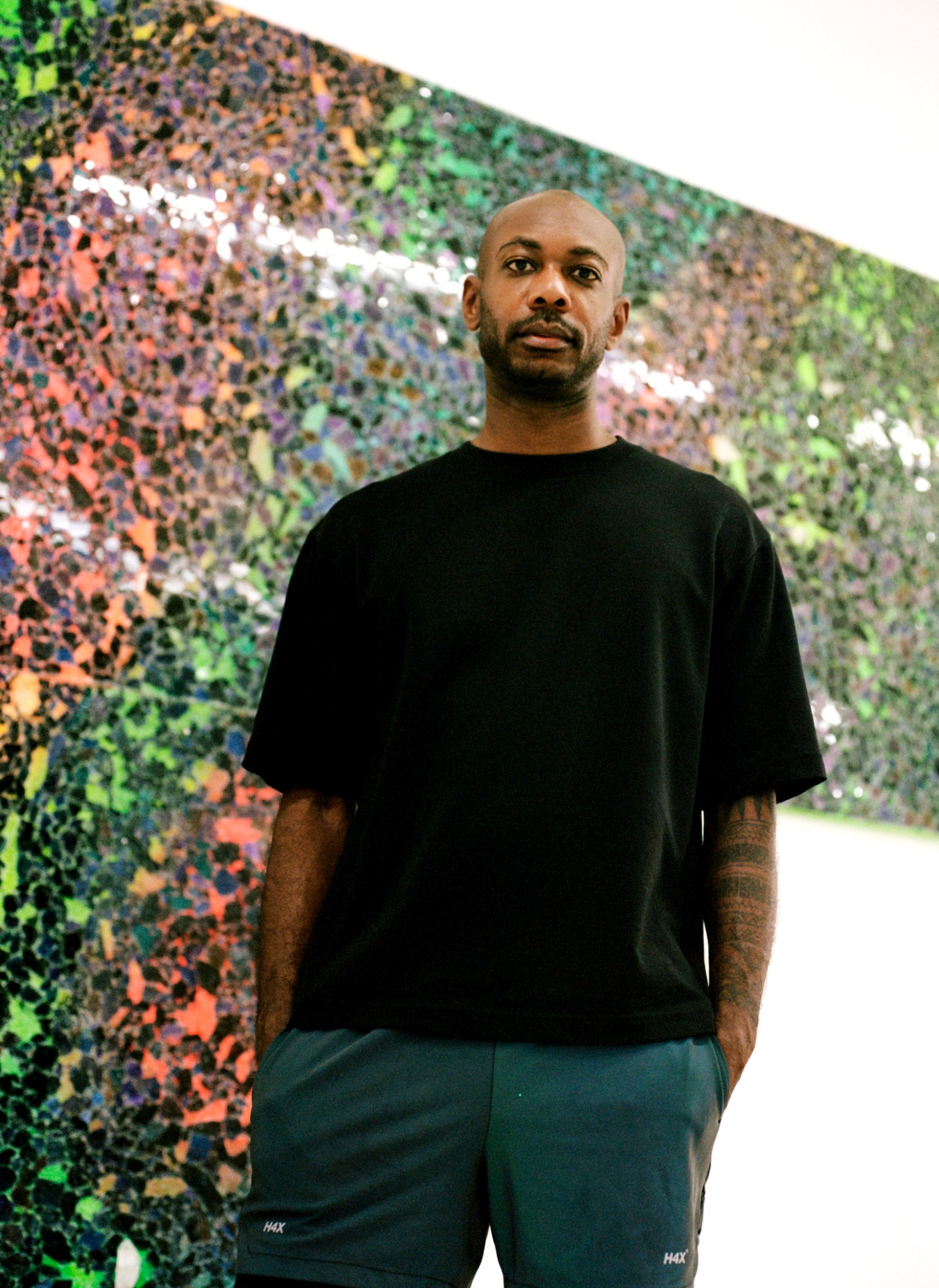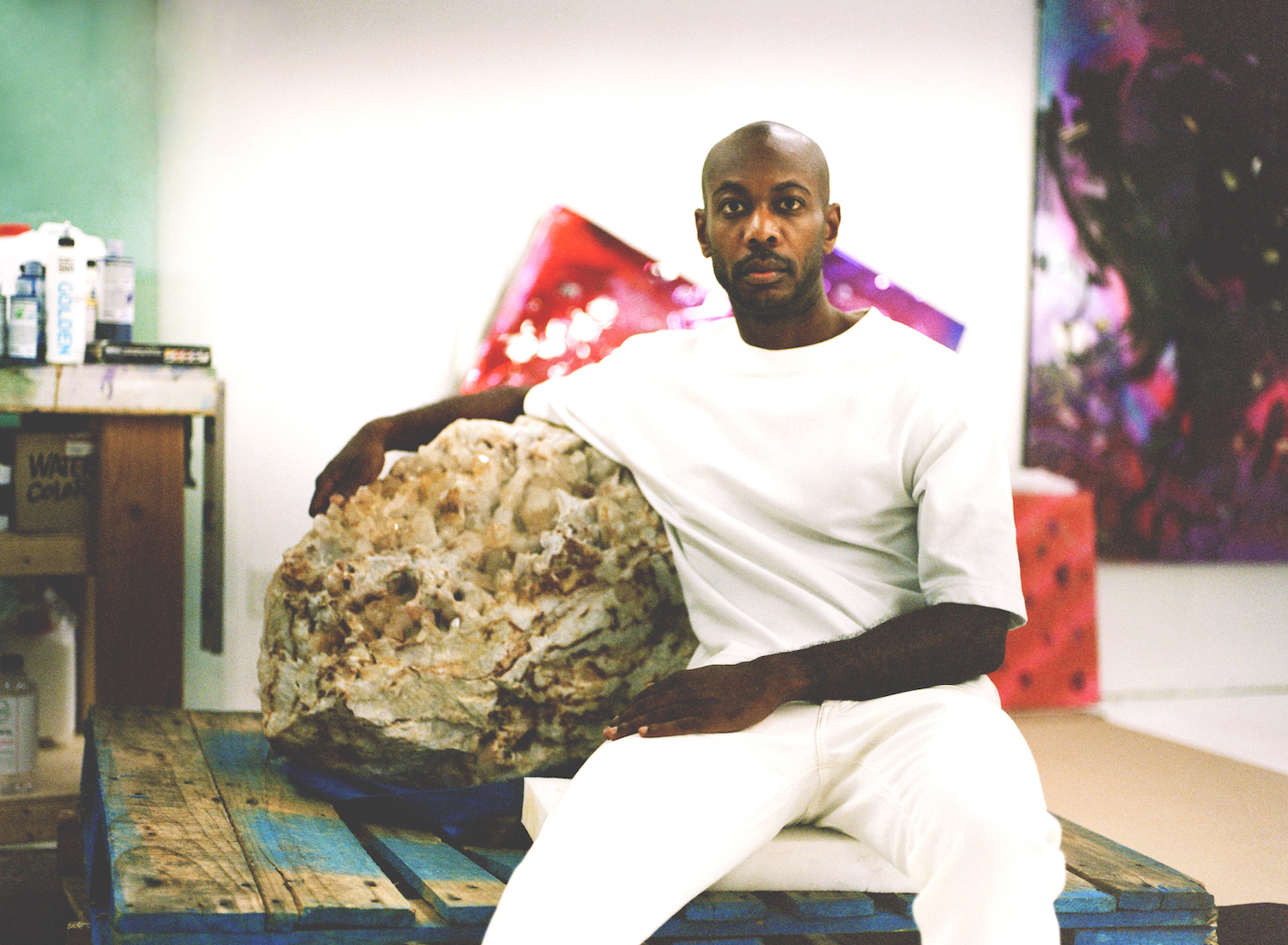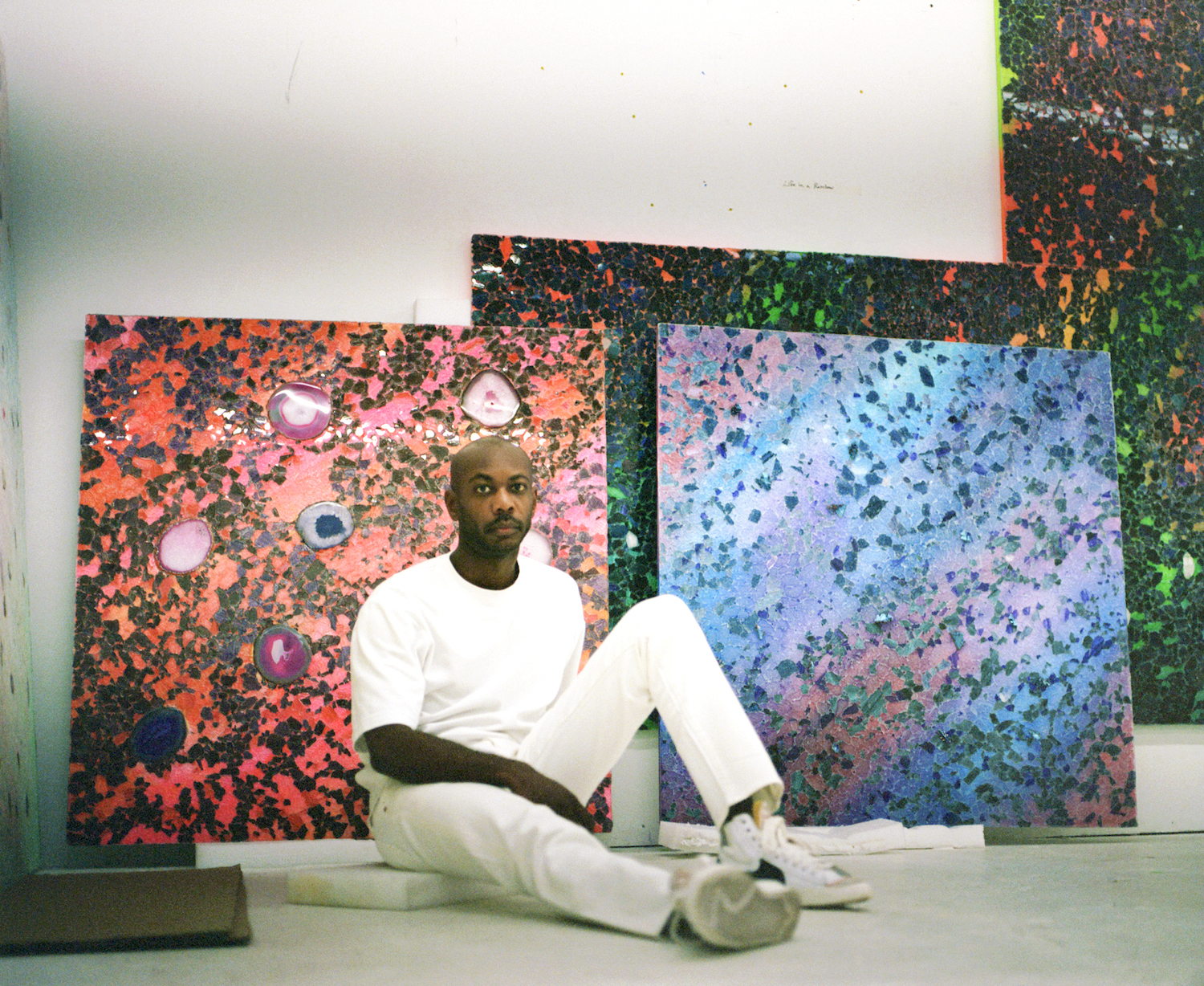“I was supposed to be doing my work, but I’d just be staring at the window, looking into the sky,” says Alteronce Gumby. He’s describing his fourth-grade self, trying to locate the first time he remembers feeling fascinated by the cosmos.
“I was just wondering what was out there. I always had an interest in the unknown and the vastness of the universe,” he says, having sensed from a young age that there was more beyond the city limits of his hometown in Harrisburg, Pennsylvania. This curiosity eventually led him to New York, where he studied painting at Hunter College before earning an MFA from Yale. Since then, he’s developed an abstract painting practice focused on colour and natural materials, probing into what they tell us about society.
Inspired by artists like Rothko, Ellsworth Kelly, Alma Thomas and Barnett Newman, Alteronce pushes colour theory into a liberatory space — troubling colour’s use as a tool to interpret human value, and instead using it to transport us past social structures into subconscious territories. “We radicalise colour for our own intention,” he says. “We politicise it and use it as a weapon, to degrade one race of human beings from another. So for me to combat that for myself, to liberate myself from these certain notions — especially being a Black man living in America — I have used my work and the vehicle of abstract painting to expand and liberate my own consciousness.”
The Color of Everything, now on view at Nicola Vassell Gallery, is both a continued exploration — of his large-scale, prismatic acrylic works, inflected with tempered glassa and gemstones — and a departure, seeing him begin to experiment with resin and more “cinematic” scaling, as he puts it. Days before the opening, we spoke with the artist about sitting alone in a James Turrell installation in Japan, pondering those images captured by the James Webb telescope, and why he’s starting to consider himself a light artist.

You’ve spoken about how your work with colour is an examination of our social connections, and the way that we categorise society — that other colour theorists have stepped into this conversation across history, but that most don’t consider nature. Why is it so important for your practice to look to the natural world?
We’re part of nature. As human beings, we get so caught up in being the alpha species here on earth, but nothing’s more powerful than nature. We forget often how connected we are, we abuse nature. We’re over-mining the resources that this planet has given us. We are not being graceful or caring to the planet. Everything that we have is given to us through nature. Especially with colour—the colours that we see, the colours that we reference, all that comes from nature. I intentionally incorporate aspects of nature into my work because I feel like that is a part of our history as human beings. Part of, you know, this planet’s history, it’s a part of the history of the cosmos. We as human beings have kind of taken this the way we interpret colour and have redefined it. We radicalise it for our own intention, we politicise it and use it as a weapon — to degrade one race of human beings from another.
So for me to kind of combat that for myself, to liberate myself from these certain notions, especially me being a Black man living in America. I have used my work and the vehicle of abstract painting to expand and liberate my own consciousness and how I perceive colour.
Tell me about the show, and your new artworks.
The show is definitely a continuation of all the things I’ve spoken about previously, thinking about colour, thinking about materials. I think within this show, we see more of an exploration in scale. The paintings are becoming more cinematic, kind of broadening my cosmic perspective towards painting. That expanding perspective is definitely influenced by the James Webb telescope, and these images that we’re getting from NASA and space exploration agencies from around the world. With these new images, this new technology, we can see further into space and time. I believe we can now see 13 billion years into the past, using light and infrared technology. When they were launching it, I found myself in Japan at the Chichu museum and I was reintroduced to the work of Claude Monet and the waterlily paintings.
Sitting there, looking at this painting, I was really thinking about reflections. I was considering how Monet was painting the pond, but also painting the reflection of the sky within the pond, and how the more you look, the more you see. The sky is just another doorway to the cosmic. I thought about him painting some essence of a cosmic landscape through this reflection.
The new paintings in the show are also these kind of lenses of their own environment — you can see yourself within the work, abstracted and distorted. Light is such a strong medium within my work — as well as the gemstones, glass and acrylic paint — but with these new resin paintings, I’m really starting to consider myself a light artist. That something I’m starting to dwell on more and more as I move into this body of work.

What about the title? How did you land on The Color of Everything?
Colour is energy, and that energy source gives colour to everything we have, especially in nature. That is happening around us all the time 24/7. Anything that you see around you, it’s all just a reflection of light and colour. And so The Color of Everything is really just a poetic way of giving meaning to the source of light, the source of colour.
Were there any other sources of inspiration you sat with while developing this new work?
I went to see the Ad Reinhart show at Pace late last spring. They had a James Turrell installation. The gallery was closed, but I got to sit in there for like ten minutes alone. To have a James Turrell installation to yourself for ten minutes is a very spiritual experience. His work is very cinematic, very transcendental.
He kind of teleports you to another time and space. He’s not really nudging you to a specific place or emotion. He’s kind of just leading you, letting your own spirit, consciousness or subconscious take you wherever you want go. In my own work, I would like my paintings to be a vehicle for that kind of sensory experience.
I just read something about how the portion of the galaxy they were able to capture with the James Webb telescope is like a grain of sand in comparison to the rest of the universe.
Any image that they’re showing us is an image that happened so far in the past. Anytime you’re looking at a star in the night sky, you’re looking at that star some hundreds of thousands, sometimes millions, billions of years in the past. It just takes that long for that light to reach us. Part of the cosmic perspective is this understanding of the past, present and future as undefined. We have the power to construct our future. It’s mind-boggling.
Follow i-D on Instagram and TikTok for more art stories.
Credits
Photography Xavier Avery



